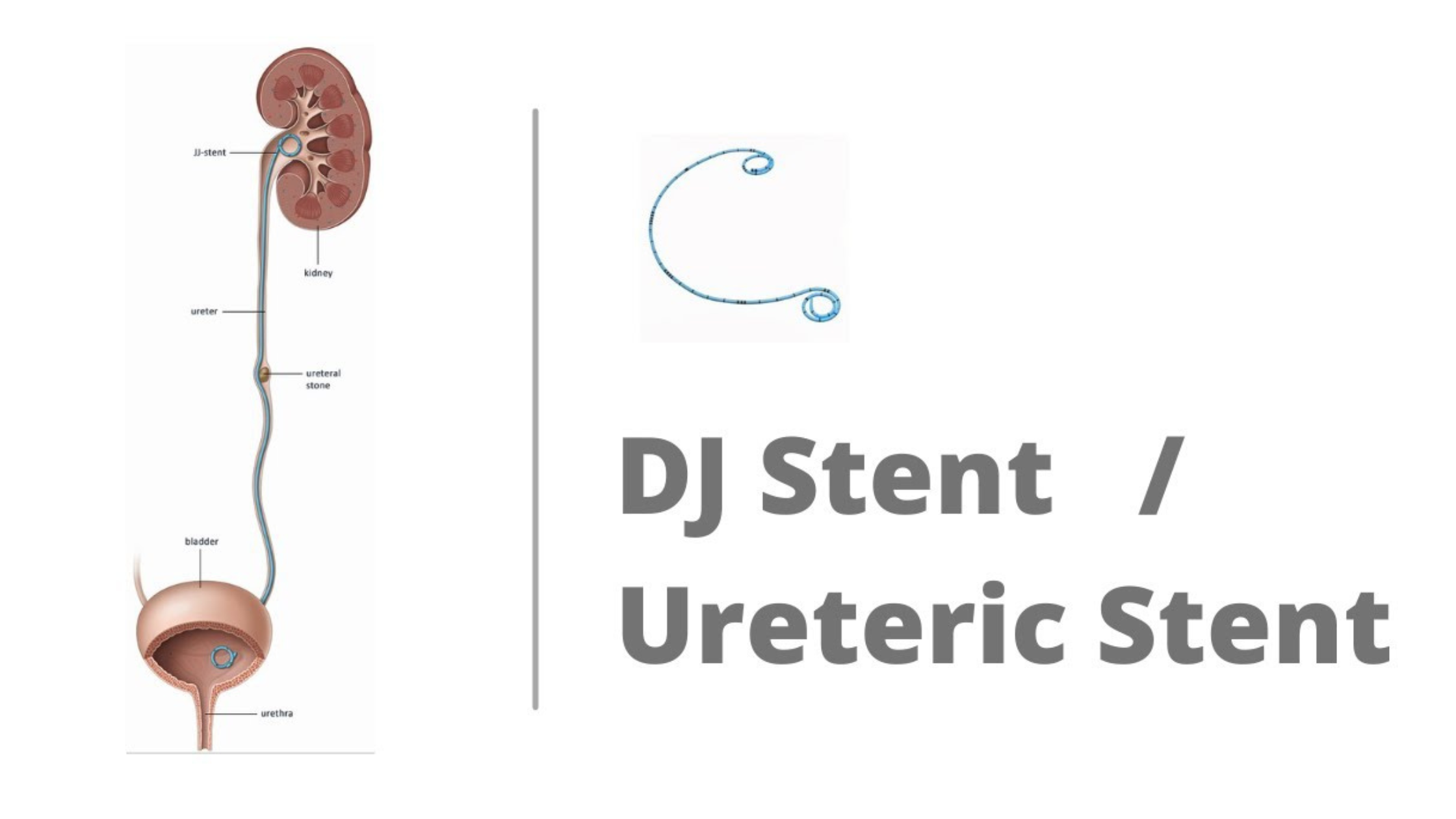
Kidney stones, though diminutive in size, wield the power to unleash intense waves of pain and discomfort. As these crystalline formations obstruct the urinary tract, those who suffer from them often find themselves in search of effective solutions. In the realm of kidney stone management, a medical intervention known as DJ stent has emerged as a key player. This blog aims to unravel the mysteries surrounding DJ stent, offering insights into its purpose, the procedure itself, and its pivotal role in providing relief to those grappling with kidney stones.
From the excruciating pain of an obstructed urinary tract to the nuanced dance of medical instruments within the body, let’s embark on a journey through the intricacies of DJ stent, exploring how this procedure brings respite to those navigating the rocky terrain of kidney stone affliction.
Watch Dr. Sumit Sharma talk about DJ Stent in detail on YouTube.
Understanding Kidney Stones
Before delving into DJ stent, it’s essential to grasp the nature of kidney stones. These are hard deposits that form in the kidneys when certain substances, such as calcium, oxalate, and phosphorus, become highly concentrated. The formation of kidney stones can result from various factors, including dehydration, dietary choices, and genetics.
Symptoms of kidney stones include severe pain in the back and side, blood in the urine, and frequent urination. While smaller stones may pass on their own, larger stones can cause blockages, leading to complications such as infections or kidney damage.
The Role of DJ Stenting
The role of DJ (Double-J) stenting in the context of kidney stones is multifaceted and crucial for both the alleviation of symptoms and the facilitation of the healing process. This section will delve into the intricate details of the role of DJ stenting, highlighting its primary functions and how it contributes to the overall management of kidney stones.
Relieving Obstruction
Nature of Obstruction: When kidney stones are too large to pass through the urinary tract naturally, they create a bottleneck, causing a blockage in the ureter, the narrow tube connecting the kidney to the bladder.
Immediate Pain Relief: DJ stenting acts as a bypass mechanism, circumventing the obstruction and allowing the flow of urine from the kidney to the bladder. This immediate relief from obstruction often translates to a significant reduction in the severe pain associated with kidney stones.
Facilitating Healing
Post-Surgical Support: In cases where surgical interventions are performed to address kidney stones, DJ stenting plays a pivotal role in supporting the healing process.
Maintaining Ureteral Patency: The stent is designed in a double-J shape, with curls at both ends. This configuration helps maintain the patency of the ureter, preventing it from collapsing and ensuring a continuous pathway for urine flow.
Drainage and Prevention of Infections
Effective Drainage: DJ stent promotes proper drainage of urine from the kidney to the bladder. This is crucial not only for symptom relief but also for preventing complications associated with stagnant urine, such as infections.
Reducing Infection Risk: By keeping the ureter open and ensuring a continuous flow of urine, the stent minimizes the risk of bacterial growth and infections that can arise when urine is trapped behind a blockage.
Temporary Measure
Time for Stone Passage: DJ stent is often considered a temporary measure. During the period when the stent is in place, it provides the necessary relief while allowing time for the natural passage of smaller stones.
Preparation for Further Interventions: In cases where additional treatments, such as lithotripsy or surgery, are planned, DJ stenting serves as a preparatory step, optimizing conditions for subsequent interventions.
Confirmation and Adjustability
X-ray Confirmation: During the stenting procedure, X-ray imaging is often used to confirm the accurate placement of the stent within the ureter.
Adjustable Length: DJ stents come in various lengths, allowing healthcare professionals to choose the most suitable size for the individual patient. This adjustability ensures optimal positioning within the urinary tract.
The DJ Stenting Procedure
The DJ (Double-J) stenting procedure is a meticulous and specialized medical intervention performed by urologists to address urinary tract obstructions, often caused by conditions such as kidney stones. This section will provide a detailed breakdown of the steps involved in the DJ stenting procedure:
Patient Preparation
- Anaesthesia: The procedure typically begins with the administration of anaesthesia to ensure the patient’s comfort. The choice of anaesthesia, either local or general, depends on the specific circumstances and the patient’s medical condition.
- Accessing the Urethra:
- Cystoscopy: A cystoscope, a thin and flexible tube equipped with a camera on its end, is introduced through the urethra and advanced into the bladder. The cystoscope provides visualization of the urinary tract, guiding the urologist throughout the procedure.
- Advancing the Stent:
- Guidewire Insertion: Once the cystoscope is in place, a thin guidewire is carefully threaded through it and directed into the ureter, the tube connecting the kidney to the bladder. The urologist uses fluoroscopy or X-ray imaging to navigate the guidewire through the urinary system.
- Stent Placement: Over the guidewire, the urologist advances the Double-J stent into the ureter. The stent, made of a soft, flexible material, is designed with a double helical coil at both ends, creating a “J” shape.
Confirmation of Placement
- X-ray Verification: X-ray imaging is often employed to verify the correct placement of the stent within the ureter. This step ensures that the stent is effectively positioned to relieve the obstruction and promote proper urine flow.
Securing the Stent
- Curling the Ends: The Double-J stent is designed with curls or coils at both ends. These curls serve to anchor the stent in place, preventing migration within the urinary tract. The secure positioning of the stent is crucial for its effectiveness in relieving obstruction and facilitating drainage.
Completing the Procedure
- Removal of Instruments: Once the stent is successfully placed and its position is confirmed, the cystoscope and guidewire are carefully withdrawn. The stent remains in situ, providing ongoing support to the ureter.
Post-Procedure Care
- Monitoring and Follow-up: Following the DJ stenting procedure, patients are monitored for any immediate complications or adverse reactions. They are usually given instructions on post-procedure care, including guidelines for managing potential side effects.
Stent Removal
- Temporary Measure: DJ stenting is often a temporary solution. Depending on the underlying condition and the purpose of stenting, the urologist may decide on the optimal duration the stent should remain in place.
- Removal Procedure: Stent removal is typically a less invasive procedure than the initial placement. It may involve cystoscopy and can often be done in an outpatient setting.
Benefits of DJ Stenting
The utilization of DJ stenting in the treatment of kidney stones offers several advantages:
Pain Relief: By alleviating the obstruction caused by kidney stones, DJ stenting provides rapid relief from the severe pain associated with this condition.
Prevention of Complications: DJ stenting helps prevent complications such as hydronephrosis (swelling of the kidney) and kidney damage that can arise from prolonged blockages.
Aid in Post-Surgical Healing: For patients who undergo surgical interventions for kidney stones, DJ stenting supports the healing process and reduces the risk of postoperative complications.
Temporary Measure: DJ stenting is often a temporary measure, allowing time for the stone to pass or for other interventions to be planned and executed.
Challenges and Considerations
While DJ stenting proves beneficial in many cases, it is not without challenges and considerations:
Discomfort and Side Effects: Patients may experience discomfort, urinary frequency, and irritation while the stent is in place. Additionally, there is a risk of side effects such as hematuria (blood in the urine) and urinary tract infections.
Migration and Blockage: In some instances, the stent may migrate or become blocked, requiring further medical attention.
Limitations in Stone Size: DJ stenting may not be effective for very large stones, and alternative treatments such as lithotripsy or surgical removal may be necessary.
Conclusion
As the curls of the Double-J stent secure its place within the intricate pathways of the urinary tract, they symbolize a lifeline for individuals grappling with the challenges posed by kidney stones. This temporary ally, though initially a source of relief, is a testament to the resilience of medical science in the face of a condition that has plagued humanity for centuries.
While DJ stenting is often a temporary measure, it plays a pivotal role in preparing the terrain for subsequent interventions, whether it be the natural passage of smaller stones or more targeted treatments such as lithotripsy or surgery. It is a strategic move in the intricate chessboard of urological care, emphasizing the importance of a tailored and dynamic approach to each patient’s unique situation.
In the evolving landscape of medical advancements, DJ stent remains a stalwart companion for those navigating the rocky terrain of kidney stones. It reflects the synergy between technology, expertise, and compassion in the quest for patient well-being. As we bid farewell to the intricacies of DJ stent, let us acknowledge its significance in the continuum of care, where science and empathy converge to illuminate the path towards healing and relief for those facing the challenges of kidney stones.
Watch Dr. Sumit Sharma talk about DJ Stent in detail on YouTube.
Dr. Sumit Sharma is an experienced urologist, andrologist, and kidney transplant surgeon with over 20 years of clinical experience. He is the founder of the Department of Urology at multiple hospitals in Gurgaon and has established successful kidney transplant programs across the city.
With a commitment to the highest standards, Dr. Sumit Sharma ensures personalised, professional treatment, making your well-being the primary focus. Choose Dr. Sumit Sharma for outstanding Urological care in Gurgaon.



